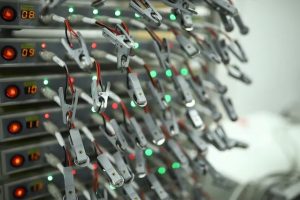Different Battery Chemistries

- Aqueous batteries have attracted significant attention because of their Safety, low toxicity, and cost-effective energy storage solution. However, the narrow electrochemical window limits their applications for developing high-energy-density batteries. In RISE, we are developing novel electrolyte additives and deep eutectic solvent which prevent water activity in terms of both HER and OER, which are necessary for the future development of low-temperature, high energy, and power-density aqueous battery.
- All-solid-state batteries (ASSBs) have attracted enormous attention as one of the critical future technologies for safe and high energy batteries. With the emergence of several highly conductive solid electrolytes in recent years, the bottleneck is no longer Li/Na-ion diffusion within the electrolyte. Instead, many ASSBs are limited by their low Coulombic efficiency, poor power performance, and short cycling life due to the high resistance at the interfaces within ASSBs. Because of the diverse chemical/physical/mechanical properties of various solid components in ASSBs as well as the nature of solid–solid contact, many types of interfaces are present in ASSBs. These include loose physical contact, grain boundaries, and chemical and electrochemical reactions to name a few. All of these contribute to increasing resistance at the interface.
- Sodium-ion batteries (SIBs) have attracted enormous attention to be an alternative to lithium-ion batteries (LIBs) because of the earth abundant and low-cost of sodium. Layered transition metal oxides appear to be potential cathode candidates for SIBs due to their plentiful structural diversity, fast diffusion of Na ions and feasibility for commercialization. In particular, Mn-based compounds have the advantages of low cost and high theoretical capacities. However, layered cathodes suffers from multiple phase transition resulting in poor rate and cyclic performance. Our research focus on designing novel composition of Mn based layered cathode and understanding its structure property relationship for applying cost effective Na ion battery.
- Metal anode or anode free battery are becoming major research topic for realizing high energy and power density battery. However, dendrite growth has become major concern as it lowers the columbic efficiency and limits cycle life. The kinetic parameters of charge transfer step (exchange current density, j0, transfer coefficient, α) of Li+/Li redox system, the mass transfer parameters of Li+ (transfer number of Li+, tLi+, diffusion coefficient of Li+, DLi+), and the bulk conductivity (κ) of electrolyte, surface diffusion barrier atom are associated with dendritic growth of metal. We design experiment (electrochemical and analytical) to quantify the various key parameters associated with dendrite growth and cell failure.